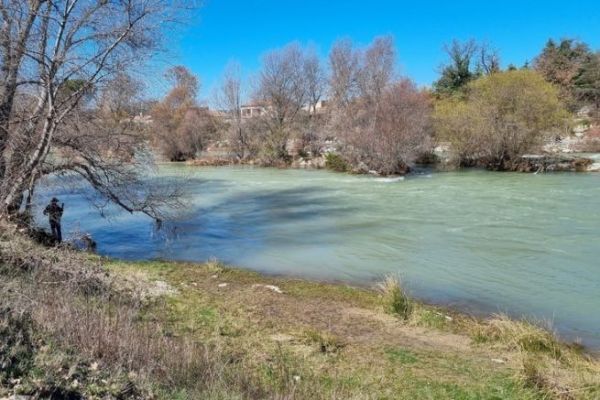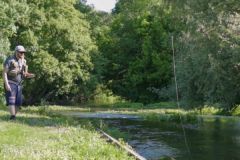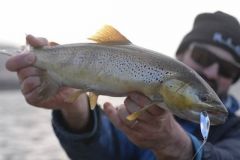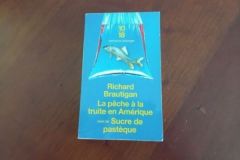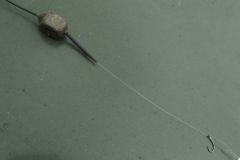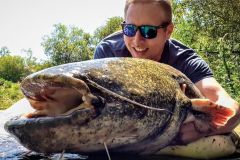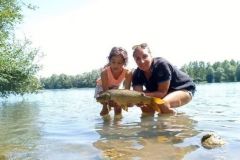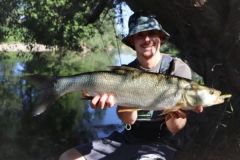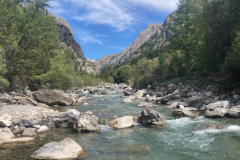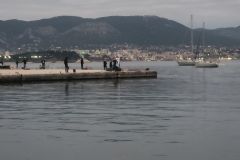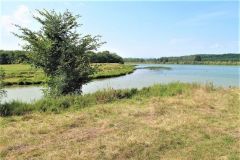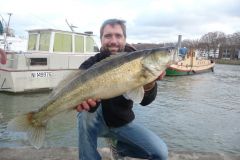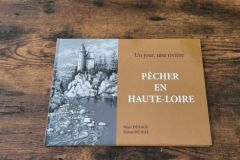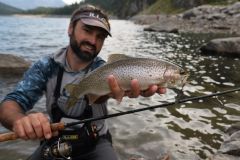The Lower Verdon offers an unspoilt environment, far from the crowds of the gorges, ideal for anglers in search of tranquillity and beautiful fish.
Species and techniques
Main speciesâeuros¯: fario trout (wild population preserved), minnow, river barbel, chub, and gradual introduction of grayling since 2020.
Authorized techniquesâeuros¯: fly fishing (dry, nymph), lures, toc, nymph toc and single rod. Natural or artificial bait can be used in accordance with local regulations.
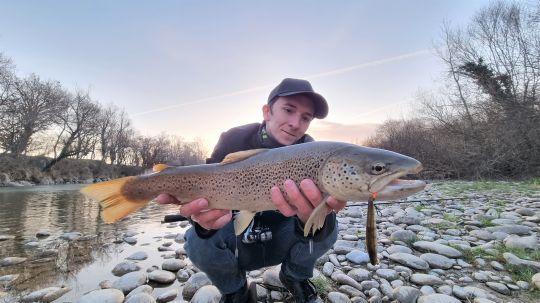
Routes and regulations
Between Gréoux and St Julien, a no-kill run of over 3âeuros¯km attracts experienced fly fishermen. The trout are exceptionally large, sometimes well over 60âeuros¯cm, but very wary. Only single barbless hooks are allowed, and catching a large trout is a real challenge.
Regulated from Gréoux to Vinon, the flow of the Verdon is constant thanks to the dam, allowing regular fishing all year round. Fario trout are well represented, but their wary nature and crowded conditions make for technical fishing. The most effective techniques are fly fishing and casting, with a preference for sight fishing and patience.
The AAPPMA du Bas Verdon and the Fédération de Pêche are actively involved in sustainable management, protecting juveniles and improving aquatic habitats. A minimum catch size of 30âeuros¯cm and a quota of just one brown trout per day have been implemented in certain sectors since 2023, in order to preserve the local stock and promote reproduction. No-kill runs are strictly monitored to ensure the sustainability of populations.
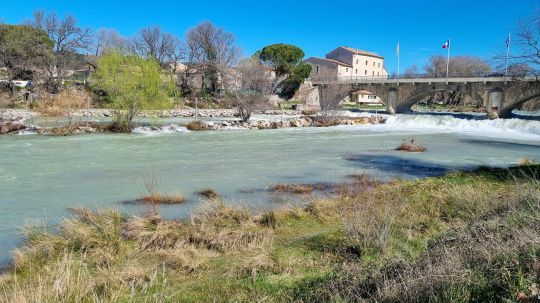
Flies to choose
Spring (March-April)
- Heavy nymphs : Pheasant Tail, Copper John, helmeted nymphs (tungsten) for hollow fishing in strong currents.
- Emerging flies : Emerging olive, March Brown, to take advantage of the first hatchings.
- Dry : March Brown, Baetis, small olives, especially on sunny days.
Early summer (May-June)
- Dry : CDC olive, sedge (trichoptera), mayflies (Ephemera), winged ant during flight.
- Light nymphs : gold or copper ball nymphs, small clear nymphs for fishing calm or smooth areas.
- Streamers : small white or olive streamers to tempt the big post trout.
Summer (July-August)
- Dry : sedge, black ant, small discreet flies (midges, microflies), as fish are wary.
- Fine nymphs : small nymphs (hook size 18-20), natural colors, very slow animation.
- Land : grasshoppers, tipulas, beetles, for use at the edges or under foliage.
Early autumn (September-October)
- Dry : baetis, CDC olive, brown sedge.
- Nymphs : pheasant tail, dark nymphs, small whipworm larvae.
Lures to choose
- Small swimming fish : minnow type (3 to 6âeuros¯cm), natural colors (trout, minnow, perch), to be fed slowly near caches and edges.
- Spinners : size 0 to 2, silver or copper, for use in currents and deep waters.
- Micro-jigs and micro-spoons: for wary or deep-seated trout.
- Soft lures : small shads (4-5âeuros¯cm), natural colors, mounted on light leaded head for scratch fishing or line fishing.
Practical tips
The trout of the Lower Verdon are very wary: take care when approaching, use long, thin leaders (fluorocarbon 12 to 16/100), change flies or lures if the fish refuse, and keep a close eye on surface activity.
Respect regulations by using single barbless hooks on no-kill runs.
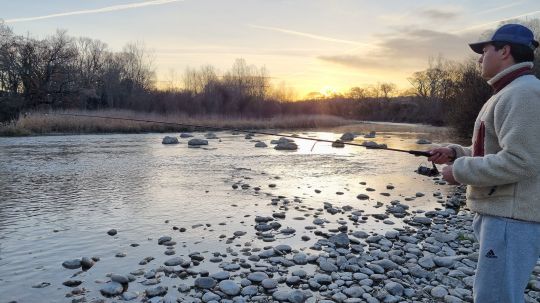
The Lower Verdon is a prime destination for trout fishing, particularly fly and lure fishing, with regulated courses, good-sized fish and exemplary resource management. Patience, discretion and technique are the keys to success on these demanding waters.

 /
/ 